Clutch, Roller Weight, Slide Piece, Variator
What is CVT, Scooter(Bike), Structure, Parts, Explained
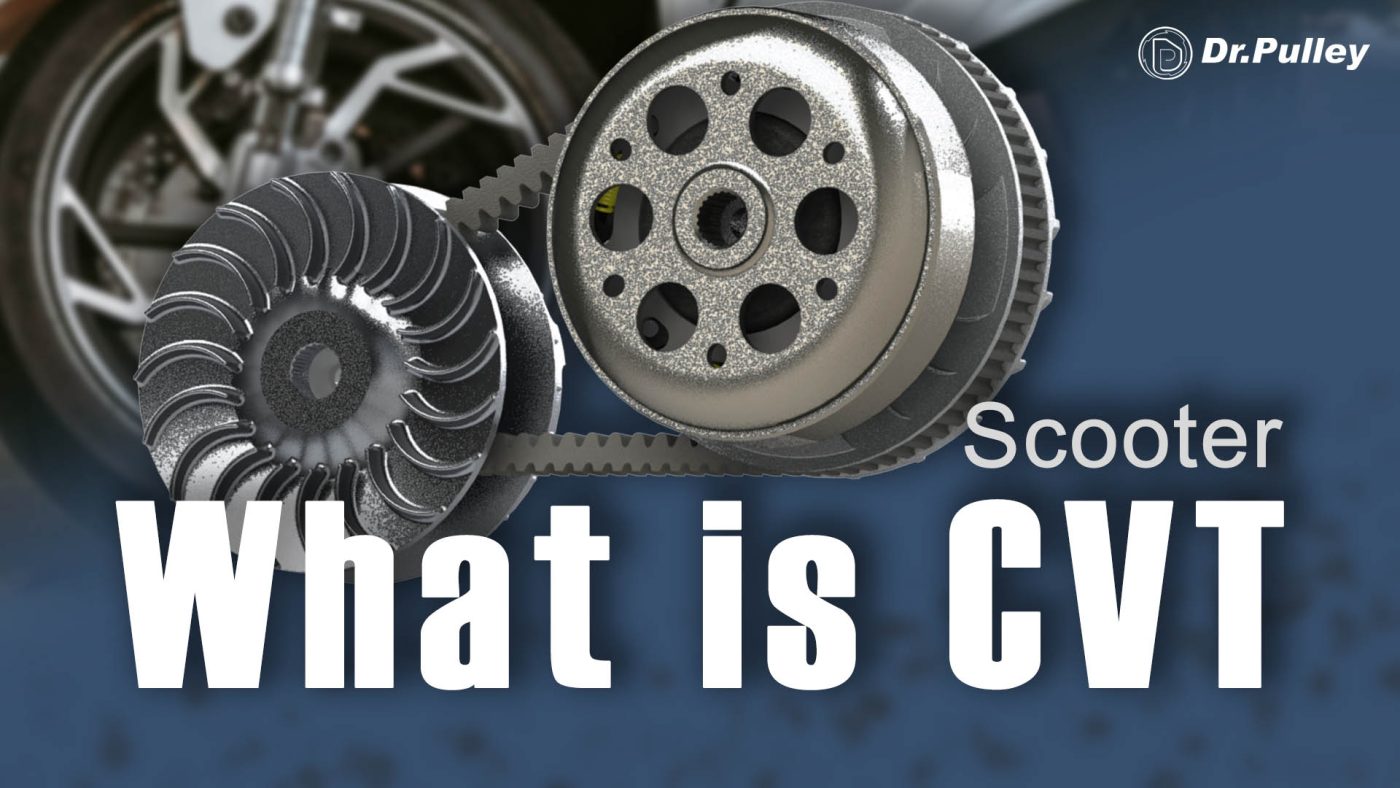
What is CVT
CVT, also known as Continuously Variable Transmission, means that the speed change is a continuous and non-step-by-step. In terms of the construction principle, in short, there are two pulleys, the one in the front and the other in the rear. The front pulley rotates to drive the rear pulley to rotate via the belt transmitting power. The belt’s each diameter of the position is changed by the two pulleys to achieve a shifting gears.

Preface
This article is mainly about scooter(bike), not all CVT systems are described like this way, it may have slight differences with each scooter models, so this structure is just for reference only.
Through the introduction in this article, you can have a basic understanding of the CVT system and structure.
CVT Advantage
If there are five shift gears in a traditional transmission, and then 5 sets of gears are required. The Continuously Variable Transmission save the space of these bulky gears and the mechanical structure for shifting gears. A traditional transmission would like to achieve the stable speed shifting, it must use a lot of gears that are assembled the one to accomplish similarly the CVT effects. Compared with it, the advantages of the CVT could be explicitly inferred, as follows:
- Light weight
- Less space
- Low costs
- Fuel economy
- Driving Comfortable

CVT does not transmit power directly like chains and gears. Since the power between the pulleys is only transmitted by friction, slippage will be its main problem, especially in situations where high torque is required, power will be lost or performance will decline, and work efficiency will decrease, such as with starting, loading cargo, climbing slope, etc. The disadvantages of CVT are as follows:
- Poor torque performance
- Slow response speed
In summary, the characteristics of the CVT system are small size, light weight, low power, fuel efficiency, comfort, and low cost. It is very suitable for use on scooter and meets the needs of scooter groups.
CVT Structure
The internal parts of the transmission system structure of a Scooter can be roughly divided into two blocks of parts:
CVT Gear shift concept
In a CVT system, one side of the belt is placed between the Variator and the Fan. The other side of the belt is placed in the Driven Face, clamping the belt through the compressed Torque Spring power.
When the engine rotate, the Roller Weight slide in the Variator’s grooves due to the centrifugal force, the grooves are designed with a slope, thus the pushed belt to expand outward, because the total length of the belt is constant, at the same time, on the other side of the Driven Face of the rear pulley, the belt moves inward instead, and the half of the Driven Face is pushed to move forward.
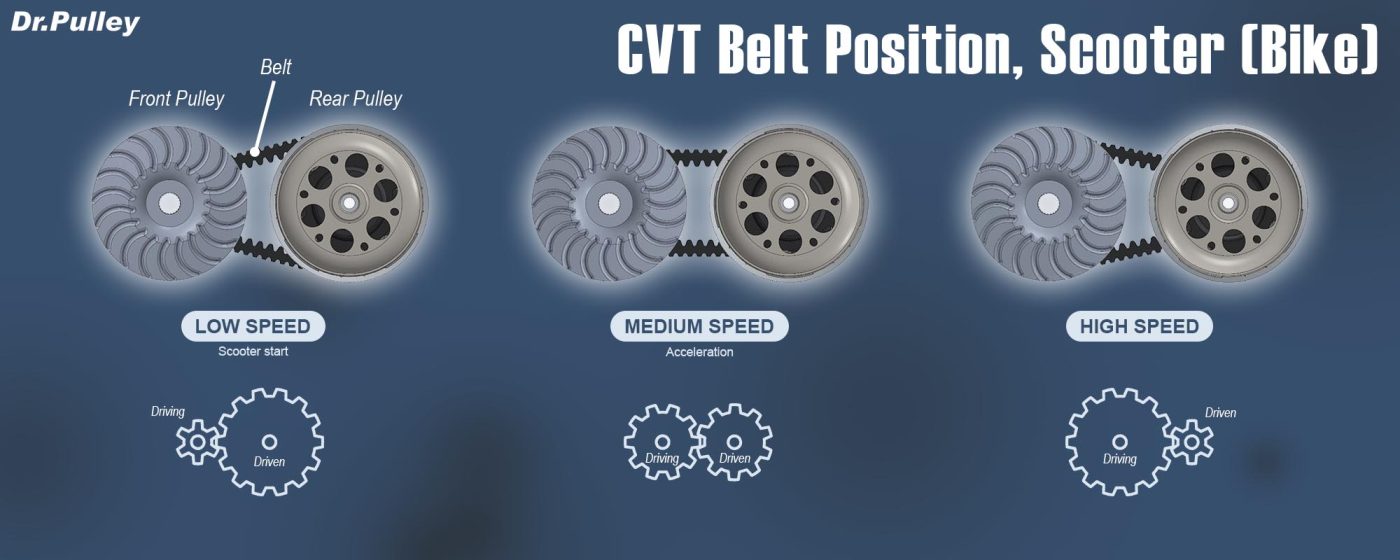
When the scooter start, the front pulley has a smaller diameter and the rear pulley has a larger diameter; During the acceleration, the front pulley is about the same size as the rear pulley; When the scooter is at high speed, the front pulley has a larger diameter and the rear pulley has a smaller diameter.
This is the smooth process of the scooter’s speed shifting, so there is no feeling little jerk of the gear shifting.
CVT Parts
Roller Weight
Roller Weight is a cylinder shape in the Variator. It has the centrifugal force depending on the engine rotation to push the Variator forward. Its weight amount is chosen to control the timing of the speed change.
A heavier Roller Weights is earlier push the belt to the outside, and the output rpm is at a lower value.
A lighter Roller Weights runs at a higher rpm, because the pushing force of the Variator is smaller, it is relatively difficult that the belt is pushed to the outside, and the limit maximum speed may be less than ideal.
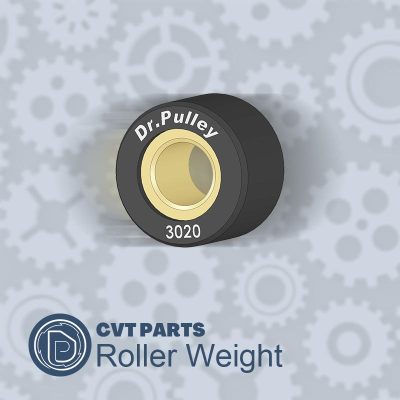
Variator
Variator, it’s also called Movable Pulley, depending on the design there are 6 to 12 grooves spaces that the Roller Weight are movable, in addition to rotational motion, it also moves forward and backward during speed change.
The slope angle from the contact face with the belt, and on the other side the slope curvature in the grooves surface both affected the acceleration curve of the scooter.
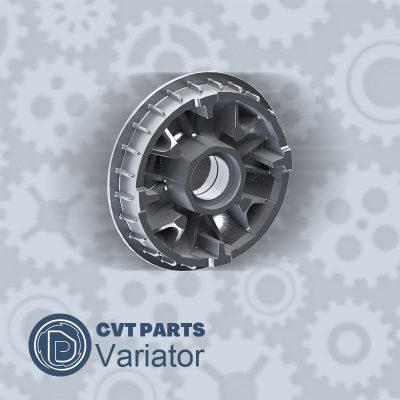
Variator Boss
Boss, it is placed in the inner hole of the Variator, they are installed together with the engine output shaft, it protects the engine shaft like a bushing, once the Boss is damaged, it can be replaced immediately. Most of the time it rotates synchronously with the Front Pulley.
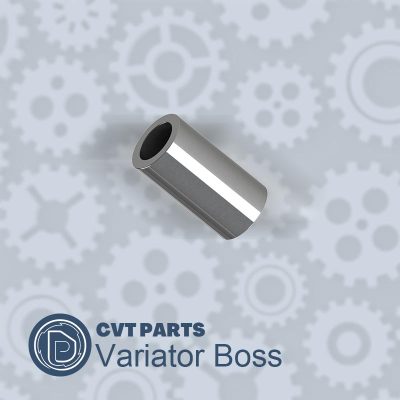
Ramp Plate
Most of the Ramp Plates are designed as with the Slide Pieces, which have the advantages of smooth movement and low resistance.
Ramp Plate form a set with the Variator that restricting the Roller Weight to slide within the groove, and they have a rotation together.
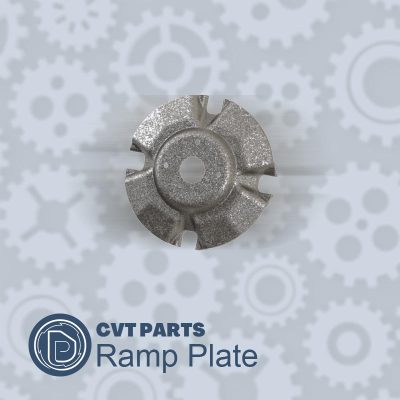
Fan
Fan, with the Variator cramping the belt to rotate on the two slope surfaces. The other side of the fan has a such like a blade shape.
When it rotates, it drives the outside air into the transmission system to achieve the effect of cooling the parts.
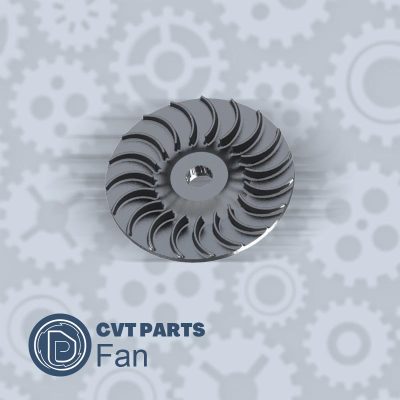
Driven Face
The structure of the upper and lower plates of the Driven Face is somewhat similar to the combination of the Variator and the Fan.
There is one pin and groove to lead a rotation of a bit of certain angle when opening and closing.
When the scooter is stationary, the Driven Face is closed; when accelerating, the Driven Face is open gradually and the belt moves in toward its axis, the direction of movement of the belt in the Rear Pulley is opposite to that of the Front Pulley.
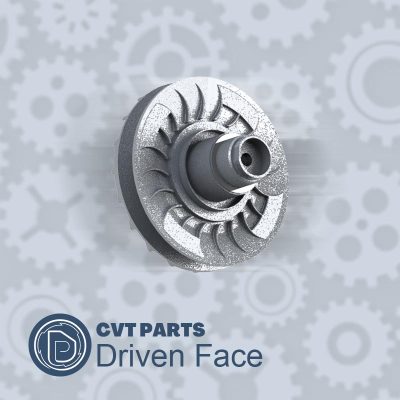
Torque Spring
Torque Spring, it is a part that allows the belt and the entire CVT to return to their original position. it is installed at the front end of the Driven Face on the rear pulley.
The spring force determines the speed change time and acceleration performance. Using a harder spring can delay the speed change range and increase the acceleration capability, but it may end up the Roller Weight to have insufficient power to compress the Torque Spring and cause the decreasing maximum speed.
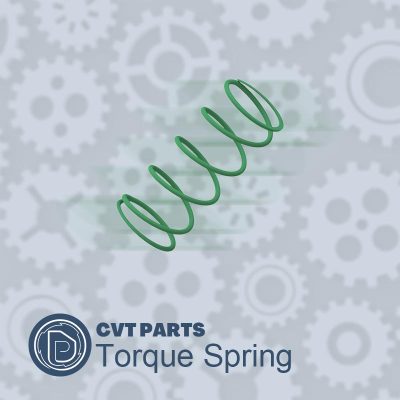
Clutch
The function of the clutch is to engage and disengage.
When engaging, the clutch will transfer the rotational force to the next part; when disengaging, the clutch continues to rotate, but the rotational force will not be transferred to the next part.
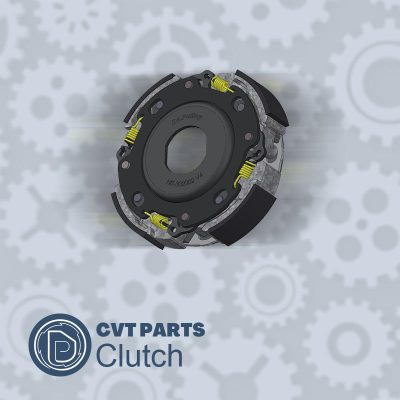
Speaking of parts, we have to talk about two important parts in the clutch:
Clutch Weights, there are usually 2 to 6 pieces. When the rotation speed increases, it is affected by the centrifugal force, overcomes the force of the clutch spring and moves outward until the Clutch Weight touches the Clutch Bell, finally, driving the scooter starts to move.
The other part, Clutch Spring, it is a part that can return the Clutch Weights to its original position.
It’s a role in controlling the timing of the clutch’s engagement and disengagement.
Spring one side is hooked to the Clutch Weight, and the other side of spring is hooked to the other Clutch Weight. and determine the Clutch to make an engagement at a specific RPM, it disengages from the Clutch Bell at some RPM.
In short, harder spring get the engagement at the higher rpm. Softer spring get the engages at the lower rpm.
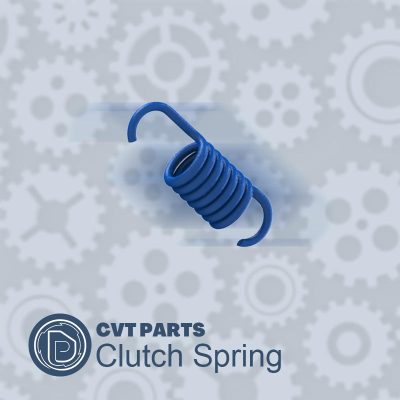
Belt
Belt, most of section of the belts are V type or trapezoid. The One-serrated belts are more common in small scooter, the double-serrated belts are more common in large scooter.
The belt span between the two pulleys, transferring the power from the front pulley to the rear pulley. Belts is equivalent to chains, but they are easier to maintain and provide a more comfortable ride and smoother shifting gear.
Clutch Bell
Clutch Bell, it is also called the Clutch Cover or Bell. When engaging, the Bell transmit the power that from the Clutch to the rear wheels output.
There is a bit of gap between the Clutch and the Bell so that the scooter does not move forward when waiting for a green light and the engine continues to run.
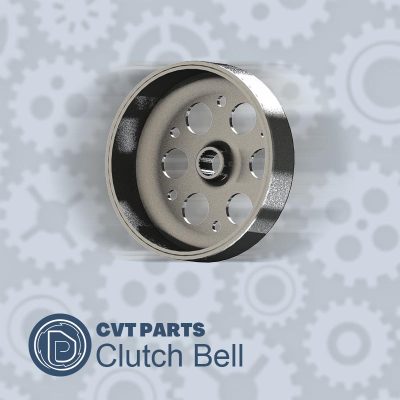
Youtube Video

More Information
Our Youtube url : https://www.youtube.com/c/DrPulley








